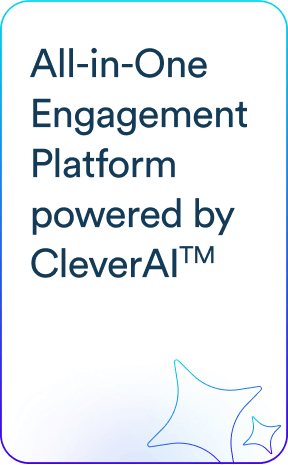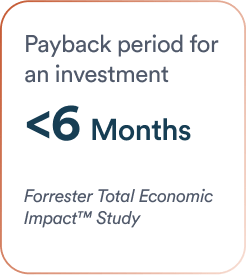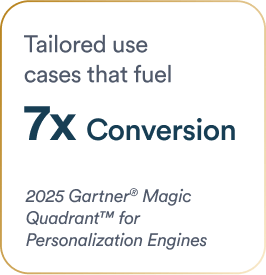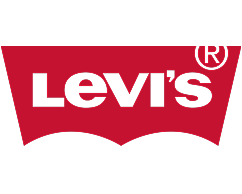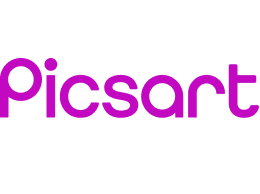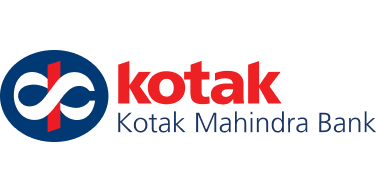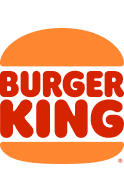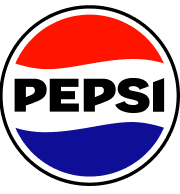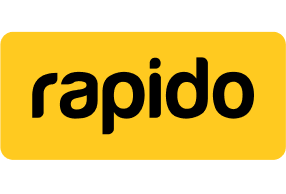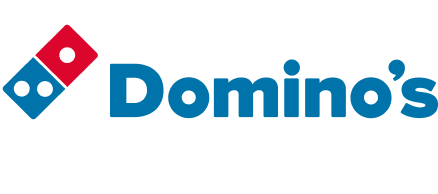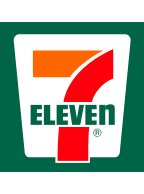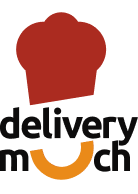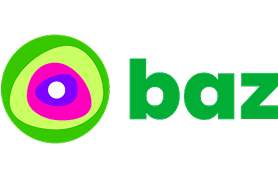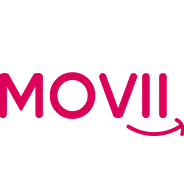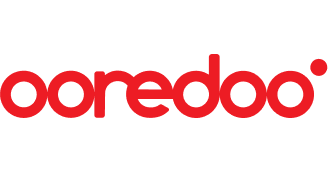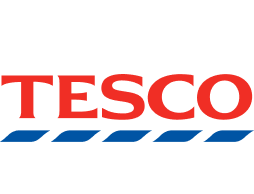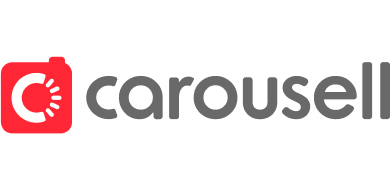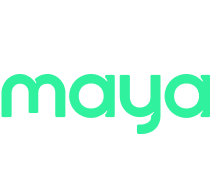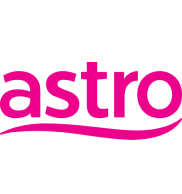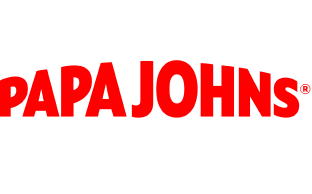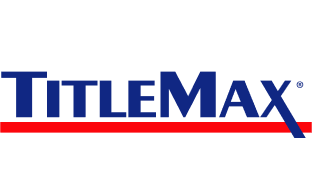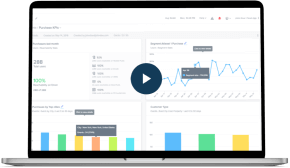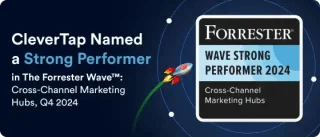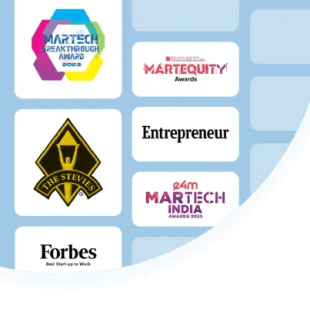Customer relationship management (CRM) systems and marketing automation platforms play different roles in managing customer data. A CRM is primarily a sales tool that stores contacts, deal stages, and customer history in one place, whereas marketing automation focuses on automating campaigns (emails, SMS, ads, etc.) and nurturing leads with personalized workflows.
Each system benefits marketers in its own way, but when integrated together, the combined power is greater than the sum of its parts. By unifying both tools, teams can leverage the strengths of each to run smarter, more efficient campaigns and ultimately improve ROI. For example, one study found that marketing automation alone yields a 544% ROI; integrating it with your CRM can drive even greater returns.
In this blog, we’ll cover how syncing CRM data into your marketing tool lets you run truly tailored campaigns. We’ll discuss strategies for automated lead scoring, closed-loop reporting, best practices, tools, examples, and marketer pain points.
By the end of this guide, you’ll understand how combining CRM and marketing automation can streamline your campaigns and boost ROI.
What Is CRM and Marketing Automation?
A CRM system is software for organizing all your customer interactions. It holds contact information, interaction history, deal status, and notes from sales or support teams.
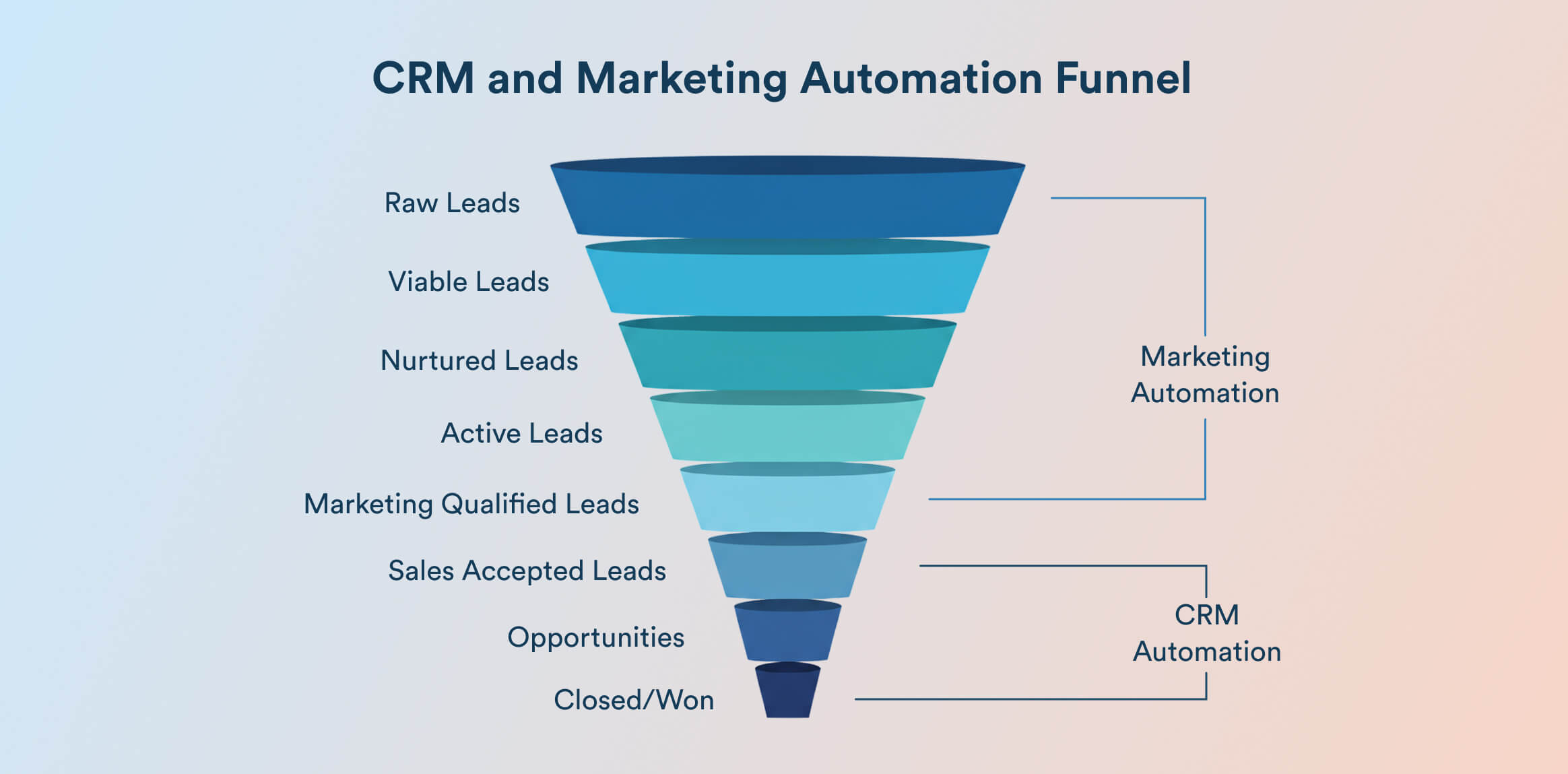
For example, a CRM might record when a prospect signed up for a webinar or made a purchase, and which sales rep spoke with them. This centralized view helps teams see who each customer is, what they’ve done, and what they need next, enabling better service, timely follow-ups, and higher retention.
A marketing automation platform automates repetitive marketing tasks and workflows. It can send drip email series, post on social media, run ads, score leads, and segment audiences, all based on predefined rules or user behavior.
For instance, an automation tool might automatically email new subscribers a welcome series, trigger cart abandonment reminders when someone leaves items in a cart, or enroll customers in a loyalty program when they hit a spending threshold. The goal is to free marketers to focus on strategy and creativity rather than manual tasks.
Why Integrate CRM and Marketing Automation?
CRM and marketing automation serve different parts of the customer lifecycle. Marketing automation excels at top-of-funnel acquisition and nurturing, while CRM manages the sales pipeline and ongoing relationships.
However, when used together, each system complements the other and provides coverage across the entire customer journey.
Unified Customer Data for Personalization
Integrating your CRM and marketing automation creates a single source of truth for customer data. All interactions—from website clicks to support tickets—enrich a unified customer profile.
This means demographic details, purchase history, and support interactions stored in the CRM become available to your marketing campaigns, and engagement data flows back into the CRM for sales to see. Research indicates that 87% of customers expect personalized interactions, which only unified CRM data can reliably deliver at scale.
When your systems are connected, every email, push notification, or ad can be tailored based on up-to-date information.
Seamless Lead Qualification and Handoff
Integrated tools make lead qualification frictionless.
Marketing automation can assign scores based on behavior and automatically update the CRM. Used together, CRM and marketing automation can make the process faster and more efficient by surfacing high-quality leads.
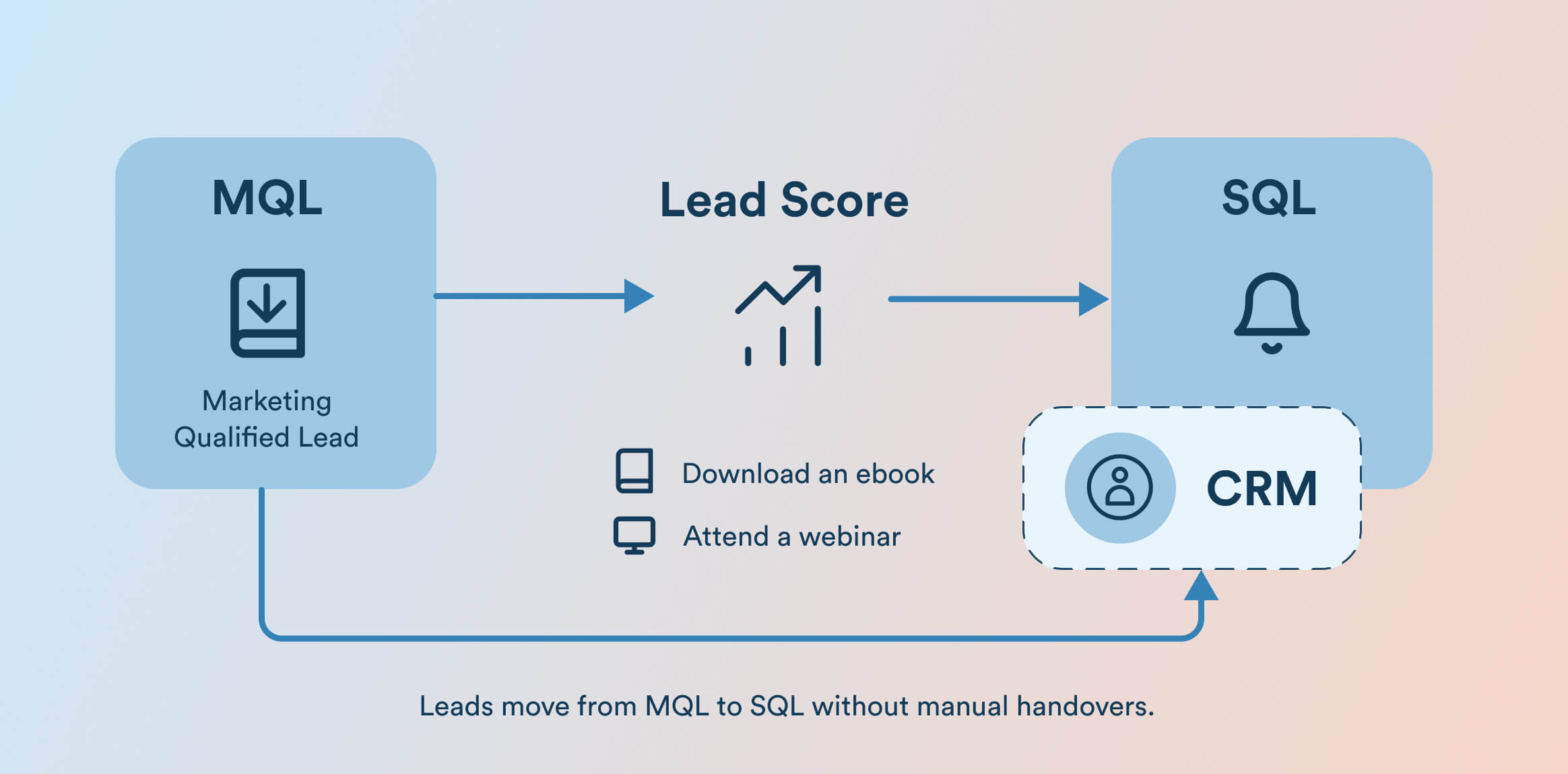
For instance, the system might boost a lead’s score when they download an ebook or attend a webinar; once the score hits a threshold, the CRM flags them as sales-ready. This automated handoff ensures that no qualified lead falls through the cracks, and sales reps are alerted exactly when they should reach out. The result is that leads move from MQL to SQL without manual handovers, making the process much faster and more consistent.
Closed-Loop Reporting
With CRM and marketing connected, you get true closed-loop reporting. You can trace every campaign from first touch through to revenue. Integrated systems let you run closed-loop reporting to see the whole picture of what’s working and what isn’t.
This means being able to answer questions like:
- Which email campaign generated the most sales?
- Which ads led to closed deals?
Aligning marketing and sales data like this not only proves marketing ROI, but also helps refine strategy by focusing on the campaigns that actually feed the pipeline.
Learn how CRM automation tools stack up and how to choose the right platform for your needs.
Better Collaboration and Fewer Data Silos
Integration breaks down silos between marketing and sales. When both teams use the same data set, communication improves.
For example, marketing knows exactly when a lead becomes MQL and what content to use, while sales sees the full marketing history of a lead. Shared insights like this align teams on a customer’s status and next steps, leading to fewer gaps or duplicated efforts across the funnel. In effect, everyone is on the same page: marketing engages leads only when appropriate, and sales never misses an opportunity to follow up on a warm lead.
Enhanced Customer Experience and Faster Time-to-Value
Finally, integrating CRM with automation accelerates results and elevates customer experience. By automating key journeys with up-to-date data, customers get timely, relevant communication.
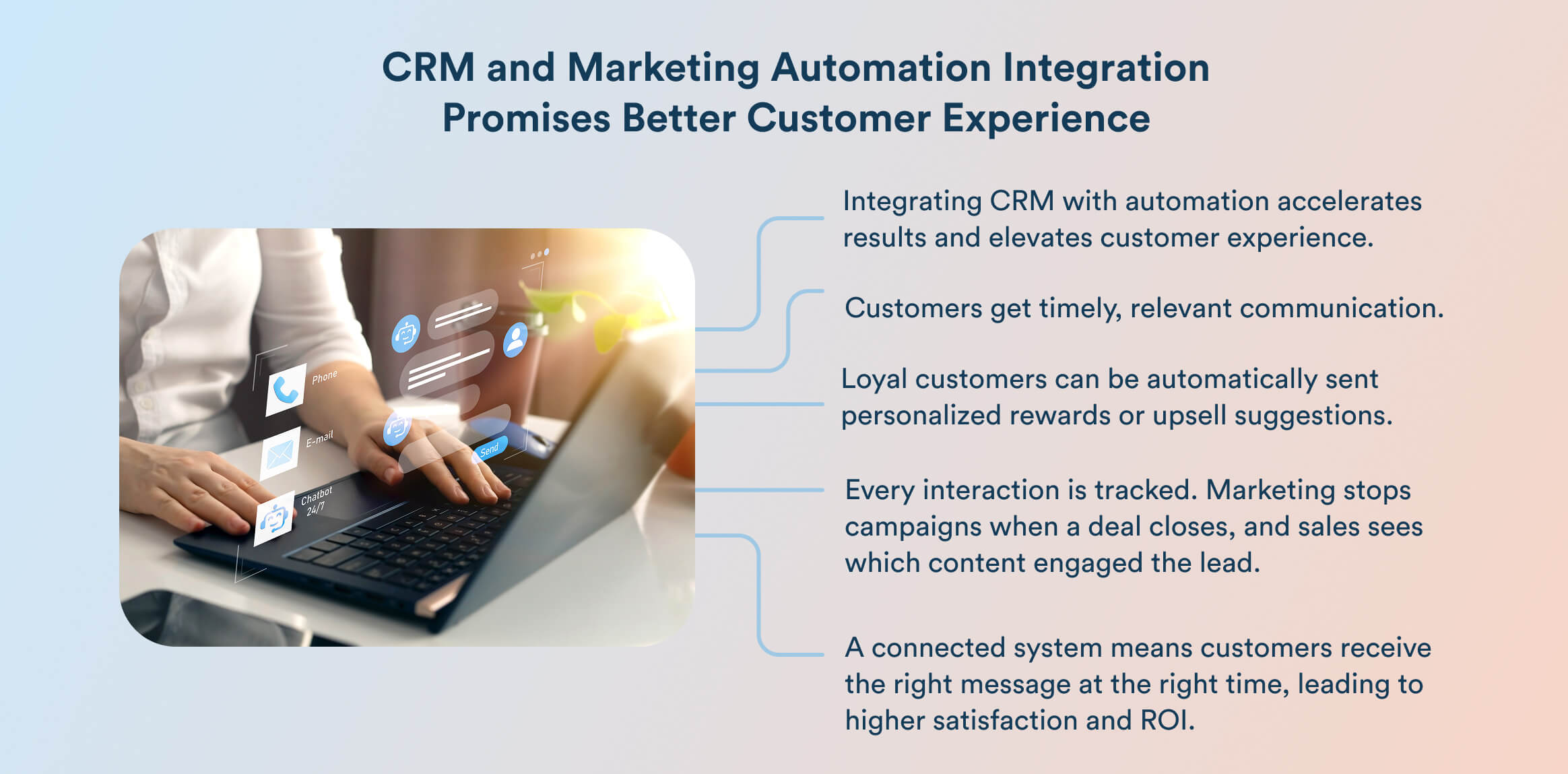
Loyal customers can be automatically sent personalized loyalty rewards or upsell suggestions as soon as they hit spending thresholds recorded in the CRM, boosting their lifetime value. Overall, a connected system means customers receive the right message at the right time, no waiting, no irrelevant emails, leading to higher satisfaction and faster return on investment.
Every interaction is tracked: marketing stops campaigns when a deal closes, and sales sees which content engaged the lead. Over time, this feedback creates a virtuous cycle.
Integration also improves customer experience. Emails become more relevant because they use actual customer data. For instance, a recent purchaser can be excluded from certain promotions to avoid annoyance, while a support interaction in the CRM might trigger a follow-up survey. These personalized touches significantly boost satisfaction. Tight integration also removes manual work.
Instead of copying data between tools, your CRM and marketing platform sync automatically. Marketers save time and can focus on strategy. Integrated systems cut costs and errors, freeing up teams to do more valuable work.
Many companies now see this integration as essential; the result is a smoother customer journey and higher overall ROI in businesses, as marketing and sales teams move forward together.
Best Practices for CRM and Marketing Automation Integration
Let’s take a look at the best practices to follow for CRM and marketing automation integration.
Choose Platforms with Strong Integrations or All-in-One Suites
Pick tools that either integrate natively or come as an all-in-one solution. Many major platforms now include both CRM and marketing modules or provide easy connectors.
For example, an all-in-one engagement platform like CleverTap can eliminate API delays and syncing errors. If you use separate products, make sure their APIs or middleware are reliable so that contact records, form submissions, and lead scores move accurately between systems. Consider vendor support and security features as well. The goal is to make integration as smooth as possible from the start.
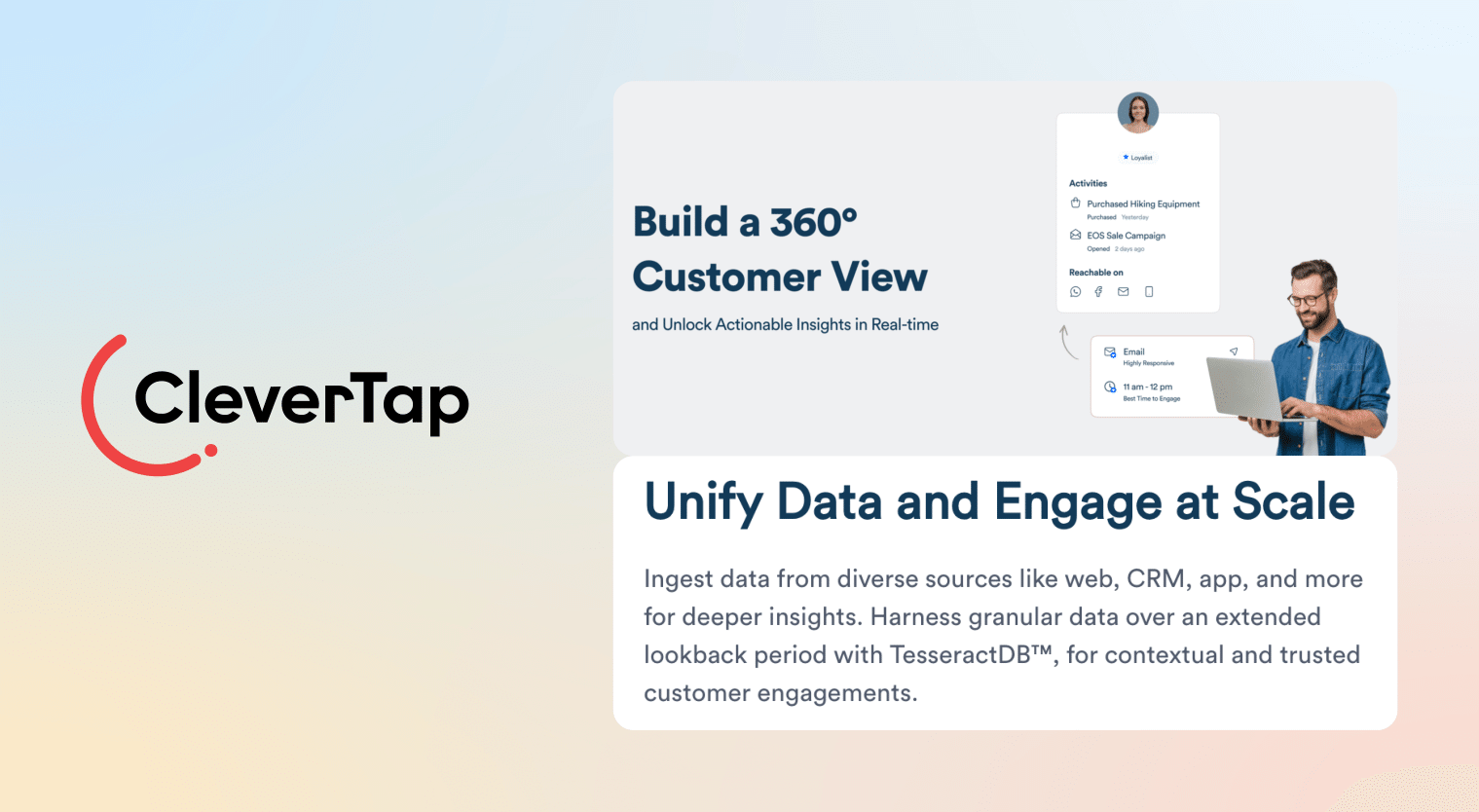
Map the Customer Journey Collaboratively
Before integration, workshop the customer journey with sales and marketing together. Identify key stages (lead capture, qualification, closing, onboarding) and determine who owns each stage.
Document what qualifies a lead to move forward and what system triggers it. For instance, decide that when a lead reaches a certain score, the CRM status changes from “Marketing Qualified” to “Sales Qualified,” alerting sales to follow up. Establishing these handoffs prevents confusion and ensures everyone knows who’s responsible for each customer at every step.
Leverage CRM Data for Automated Campaigns
Use your CRM’s rich data to fuel automated marketing campaigns. Any field or event in the CRM can trigger actions in your marketing tool. For example, when a lead’s status flips to “Customer” in the CRM, you might start a post-purchase email series automatically.
If a subscription renewal date approaches, set the system to send a reminder campaign. You can also create segments based on CRM data, for instance, an email segment of customers in a certain region, and have automation target them with tailored content.
The CRM effectively fuels personalization: after a campaign runs, the CRM records (contact status, order count) are updated, so future campaigns are smarter.
Automate Key Lifecycle Workflows
First, understand the customer lifecycle.
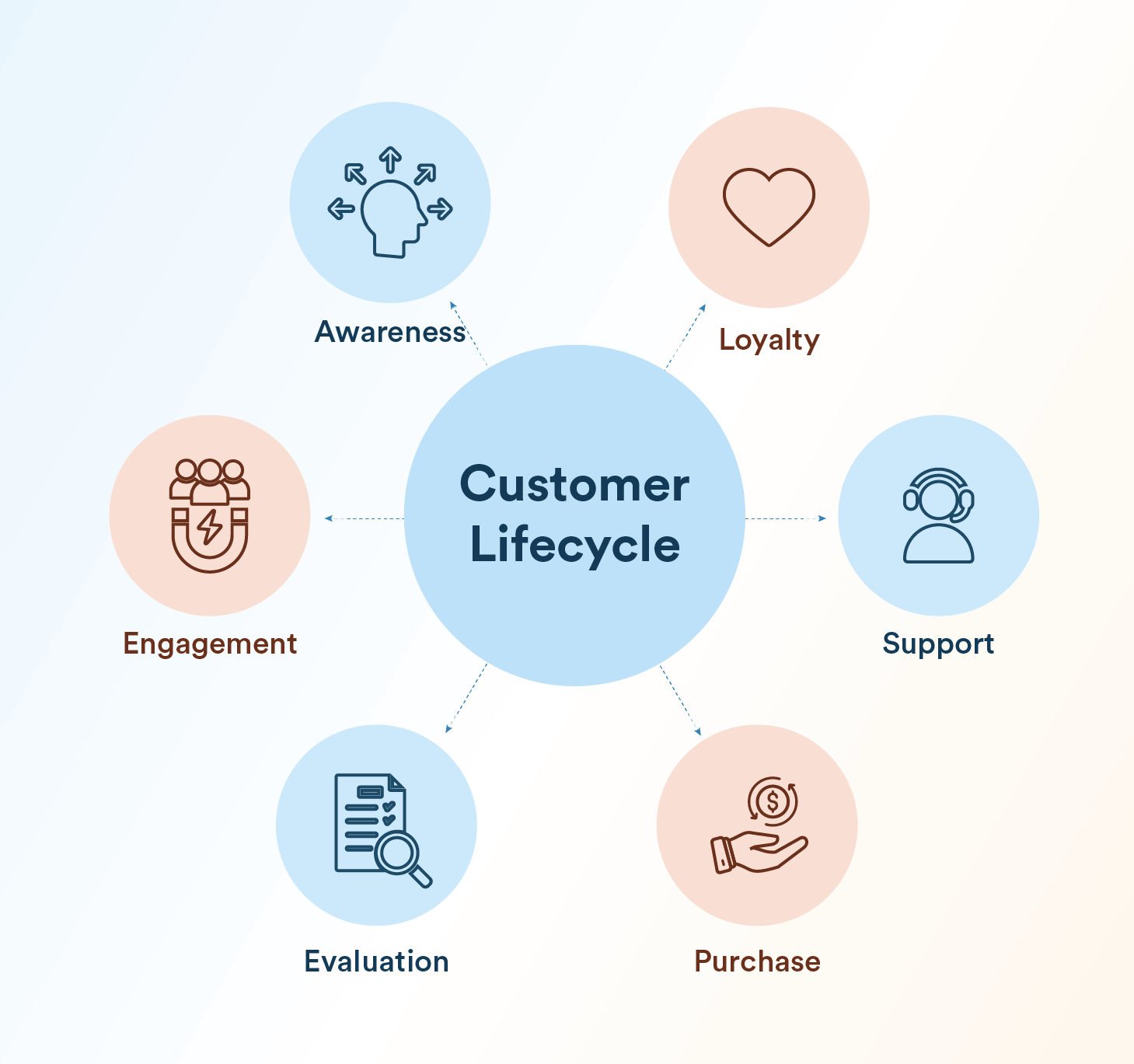
Then, identify high-impact workflows and automate them. For example:
- Configure an onboarding sequence: when a new user is added to the CRM, automatically send a series of introduction and tutorial messages.
- Set up a loyalty journey: if a customer hits a spending milestone in the CRM, trigger a personalized reward or upgrade offer.
- Automate churn prevention: if the CRM marks an account as inactive or at-risk, launch a win-back campaign.
These automated workflows ensure no key milestone is missed in the customer journey.
Continuously Analyze and Optimize
Even after integration is live, keep iterating. Use analytics to test and refine your workflows. Monitor metrics like email open rates, lead conversion rate, and ultimately sales attributed to campaigns. Many platforms now offer real-time dashboards that show customer engagement and revenue impact, enabling quick adjustments.
For example, if a triggered email isn’t getting clicks, try changing the subject line or send time. Since your systems are integrated, you can directly correlate these A/B tests with changes in the pipeline and optimize accordingly.
Learn how different types of marketing automation are useful to marketers.
CRM and Marketing Automation Workflows: Examples and Use Cases
Here are practical examples of how integrated CRM and marketing automation drive real campaigns:
Onboarding Series
When a new prospect signs up or a customer joins, the CRM flags their status and triggers an automated welcome sequence. For instance, after a user creates an account (captured in the CRM), the marketing tool sends a personalized email series with product tips and tutorials.
Because the CRM provided the user’s name and signup date, each message feels relevant and timely. Automated onboarding like this can significantly speed up user adoption and satisfaction.
Upsell and Cross-Sell Campaign
Use CRM purchase data to automate upsells. If a customer’s CRM profile shows a history of buying, the automation platform can send tailored recommendations. For example, a segment labeled “Frequent Buyer” might trigger an email promoting an upgraded product.
By combining CRM purchase history with automated segmentation, marketers can serve the right upgrade or accessory to customers who have already demonstrated interest.
Milestone-Based Messages
Trigger campaigns around customer milestones stored in the CRM. For example, on a user’s one-year anniversary with your service (tracked by CRM date), automatically send a thank-you email with a loyalty discount. If a lead completes a key action (like attending a webinar) or reaches a usage threshold, the automation tool can immediately follow up with relevant content or offers.
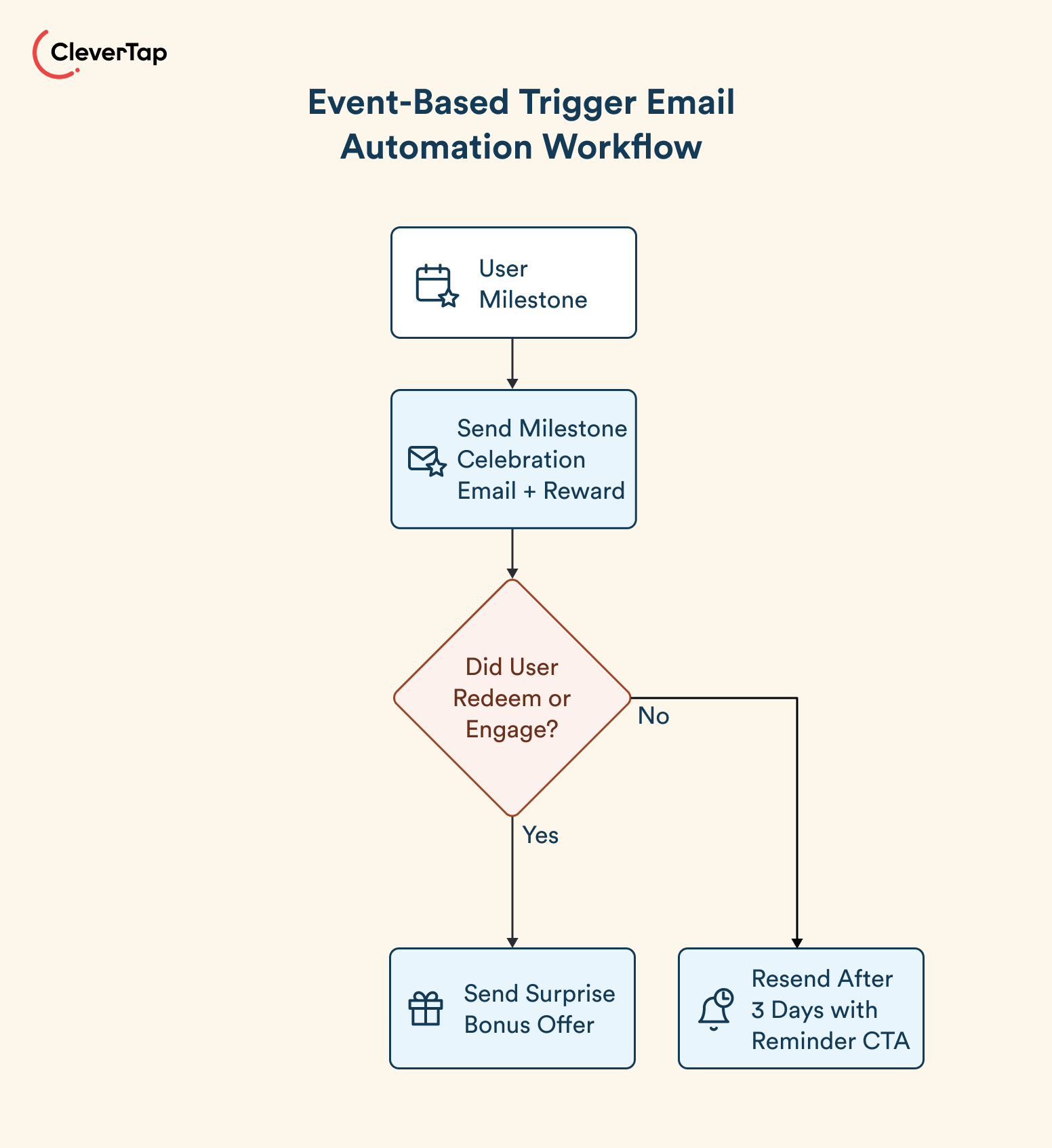
These milestone-triggered messages feel timely because they’re based on real data, leading to higher engagement and customer goodwill.
Reactivation (Win-Back) Flows
Identify dormant customers or leads in your CRM (e.g., no purchases in 60+ days) and automatically re-engage them. For instance, the CRM might tag contacts as “inactive,” causing the system to launch a special email or SMS campaign to win them back. If a lead has gone cold, the automation can send a helpful content series or a special offer.
Automating win-back campaigns ensures you reach out promptly without manual effort, often recovering customers or leads that might otherwise have been lost.
For example, Blinkit, an instant delivery service, uses CleverTap to segment users by purchase frequency, recency, and value. They spot inactive users or brand-loyal shoppers in real time. Using CleverTap’s automated campaigns, they send personalized, region-specific messages across push, SMS, and email to bring them back.

Read the full case study here.
Lead Scoring and Routing
Automate scoring and assignment of leads using both systems. The marketing automation tool can tally points based on email opens, website visits, demo requests, etc., and update the CRM score. Once a lead exceeds a threshold, the CRM status flips to “Sales Ready” and the lead is assigned to a rep. This automatic routing ensures that sales follow up on the hottest leads immediately.
In practice, marketing feeds high-scoring leads into the CRM, and the CRM data in return keeps the scoring accurate – a virtuous feedback loop of continual improvement.
What Marketers Are Saying
Industry chatter across Reddit and other forums signifies the need for CRM and marketing automation integration.
Marketers report that CRM and marketing automation integration is both powerful and challenging. Common issues include data sync errors (duplicate or missing contacts) and workflow complexity. For example, if a contact’s information isn’t syncing properly, an automated email might appear impersonal. Or if triggers are misconfigured, customers might receive duplicate messages. These kinds of problems underscore why careful integration planning is vital.
Because of these challenges, there’s growing interest in unified solutions. Marketers want a single platform where data hygiene and syncing are automatic. They prefer tools that reduce manual work so they can focus on creative strategy. In other words, the demand is high for an all-in-one stack that avoids the hassle of stitching systems together. When done right, integration eliminates tedious work, allowing teams to spend more time driving growth instead of debugging technology.
Learn how CleverTap eliminates manual burden and offers a single integrated platform.
How CleverTap Brings CRM and Marketing Automation Together
CleverTap functions as a unified engagement platform that seamlessly merges CRM-like customer data with marketing automation capabilities. It builds a single user profile for each customer by automatically aggregating data from every source, whether it’s app activity, website behavior, or imported business data such as subscription status or loyalty tier.
Each user action (like app opens, button clicks, or purchases) is tracked as an event through CleverTap’s SDK and APIs, creating a 360° customer database. This comprehensive data foundation ensures that every event and profile detail is available for segmentation and analytics.
Streamlined Segmentation and Campaign Building
Once all data is unified, segmentation and campaign setup become both intuitive and powerful. Within CleverTap’s dashboard, marketers can define detailed audience segments — for example:
- “Active users in California who purchased in the last week.”
- “New signups who haven’t completed onboarding.”
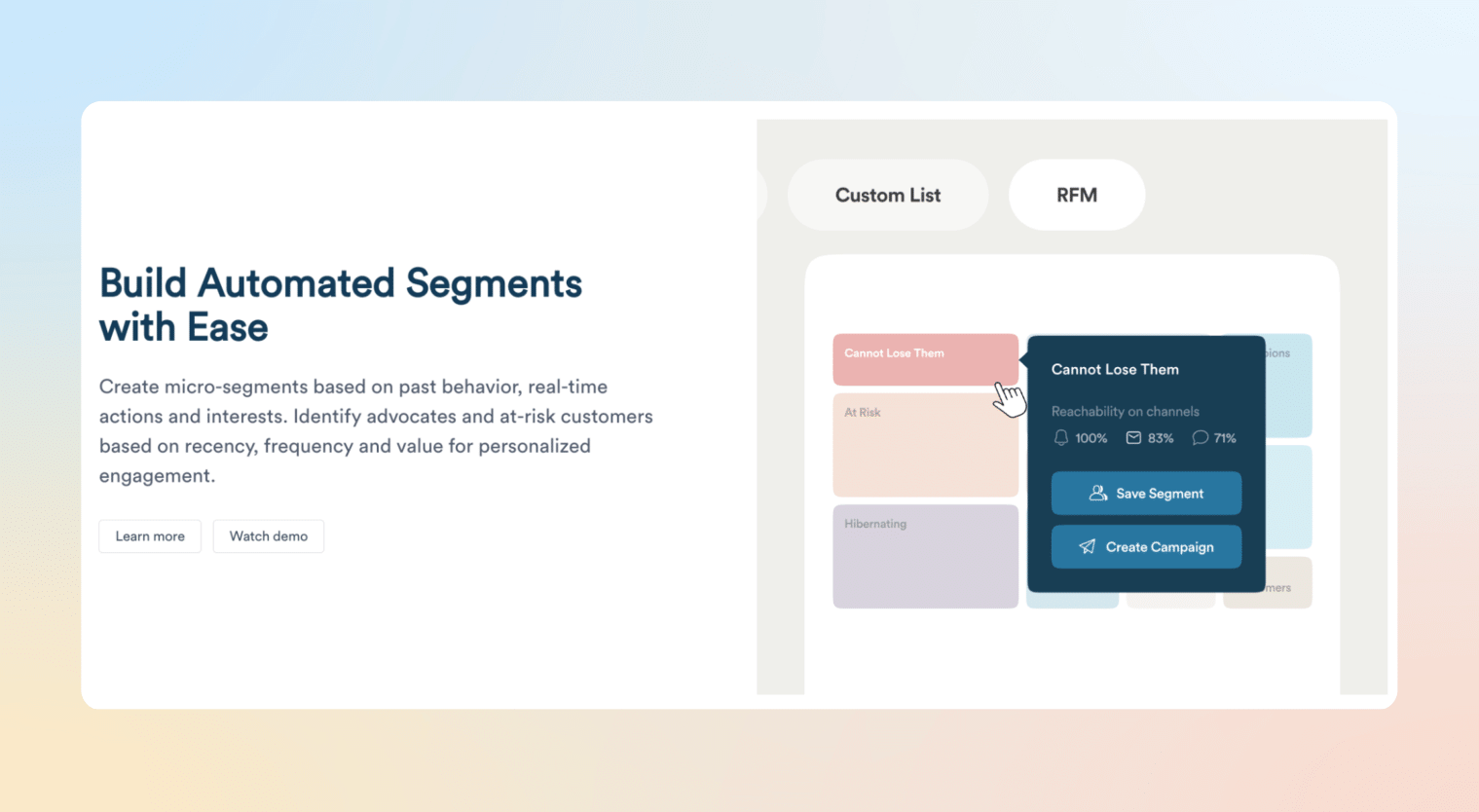
From there, campaigns can be launched instantly across 13+ channels, including email, push notifications, SMS, in-app messages, WhatsApp, and more.
You can also use CleverTap’s drag-and-drop journey builder to create automated, multi-step workflows, for instance:
- Send a push notification after signup.
- Follow up with an email if the user doesn’t engage.
- Deliver an in-app message as a final touchpoint.
All of this happens from a single interface, allowing marketers to coordinate multichannel journeys without juggling multiple tools.
AI-Driven Optimization with CleverAI
CleverTap takes automation a step further with CleverAI, its built-in artificial intelligence engine. This system introduces Agentic capabilities, meaning the AI not only executes campaigns but also continuously optimizes them based on performance data.
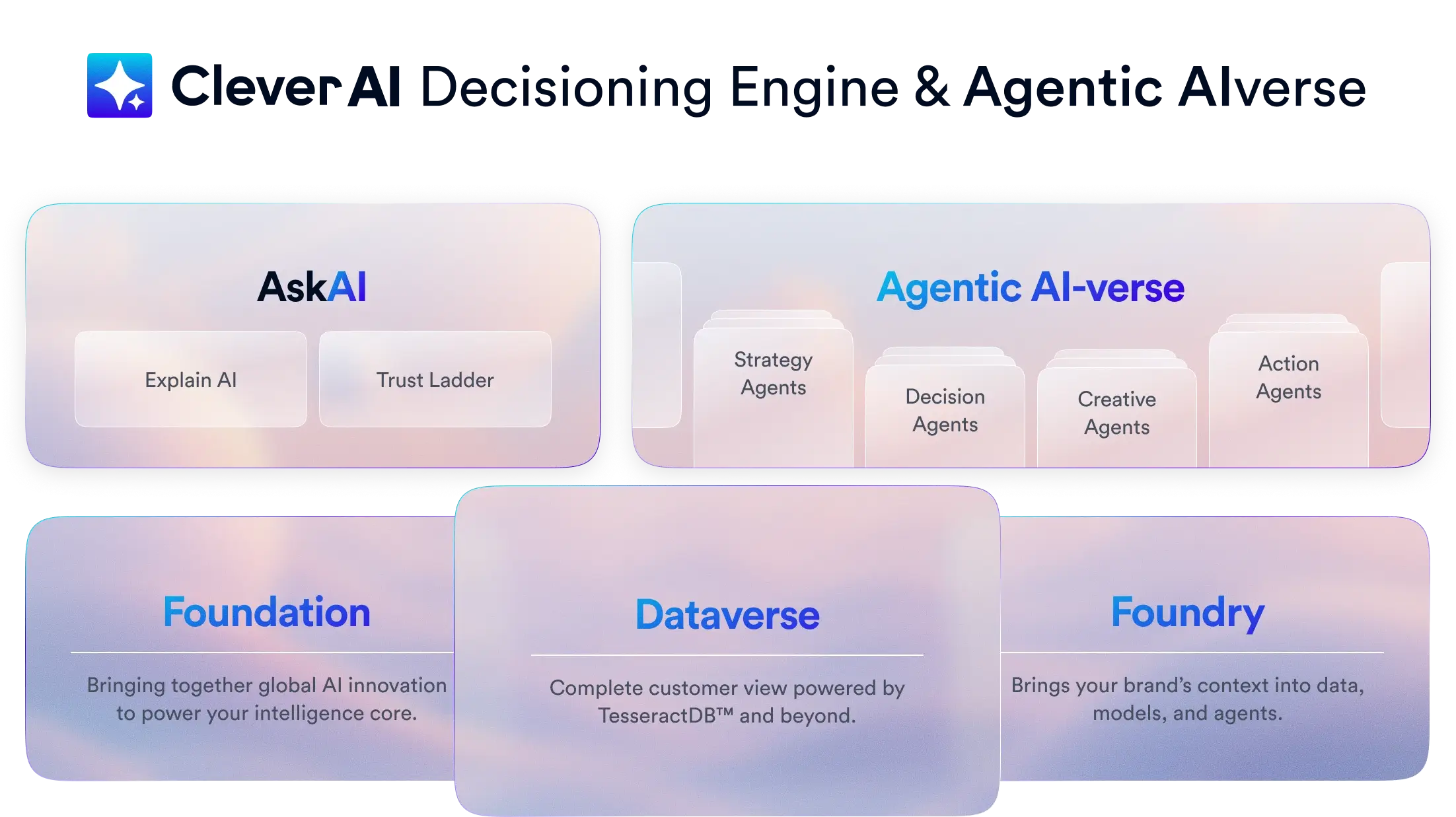
Its Agentic AI provides an intelligent automation layer, intelligently adapts to campaign needs, ensuring they follow the highest-performing paths without manual intervention. You can set a campaign goal, say, boosting trial conversions, and CleverAI will automatically adjust messaging, timing, and channels to meet that goal.
How do AI and ML contribute to effective marketing automation? Learn here.
Why It Matters
By combining CRM and marketing automation in one platform, CleverTap eliminates data silos and the need for multiple disconnected tools. Marketers gain:
- A single interface for segmentation, personalization, and analytics.
- Unified user profiles for consistent experiences across touchpoints.
- The ability to build and automate workflows like onboarding, upselling, and re-engagement with ease.
- Real-time insights that help teams focus on strategy and growth instead of technical maintenance.
CleverTap turns complex, multi-channel marketing into a connected, intelligent, and self-optimizing system, exactly what modern CRM and marketing automation were meant to achieve together.
Discover how CleverTap unifies CRM and marketing automation for smarter, faster marketing.
Connected Systems Drive Better Marketing
Integrating CRM and marketing automation unites customer data with automated, personalized campaigns. When done right, it creates seamless, data-driven workflows from acquisition to retention. Platforms like CleverTap simplify this process by removing silos and manual effort. The result: smarter customer journeys, stronger marketing–sales alignment, and higher ROI — making integration a strategic must for growth-focused teams.
Kiran Pius 
Leads Product Launches, Adoption, & Evangelism.Expert in cross-channel marketing strategies & platforms.
Free Customer Engagement Guides
Join our newsletter for actionable tips and proven strategies to grow your business and engage your customers.

